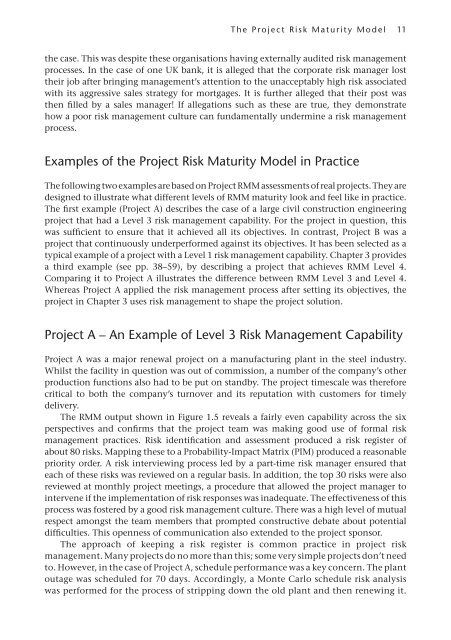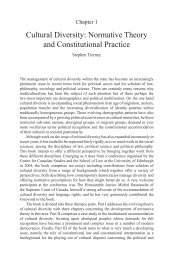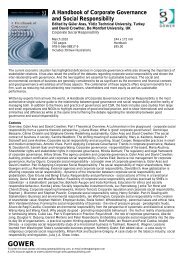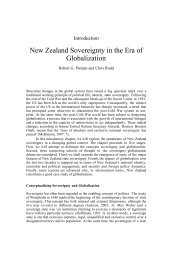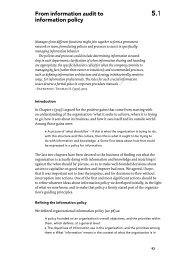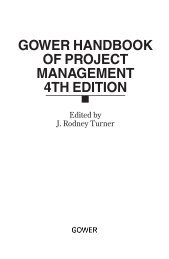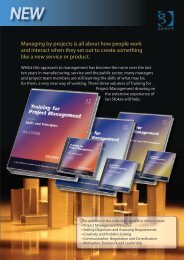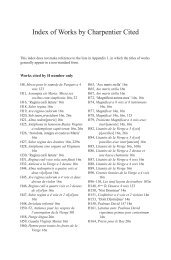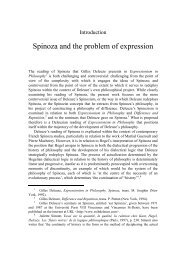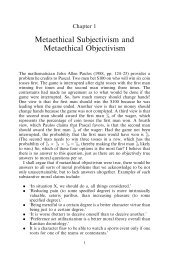The Project Risk Maturity Model
The Project Risk Maturity Model
The Project Risk Maturity Model
You also want an ePaper? Increase the reach of your titles
YUMPU automatically turns print PDFs into web optimized ePapers that Google loves.
T h e P r o j e c t R i s k M a t u r i t y M o d e l<br />
11<br />
the case. This was despite these organisations having externally audited risk management<br />
processes. In the case of one UK bank, it is alleged that the corporate risk manager lost<br />
their job after bringing management’s attention to the unacceptably high risk associated<br />
with its aggressive sales strategy for mortgages. It is further alleged that their post was<br />
then filled by a sales manager! If allegations such as these are true, they demonstrate<br />
how a poor risk management culture can fundamentally undermine a risk management<br />
process.<br />
Examples of the <strong>Project</strong> <strong>Risk</strong> <strong>Maturity</strong> <strong>Model</strong> in Practice<br />
<strong>The</strong> following two examples are based on <strong>Project</strong> RMM assessments of real projects. <strong>The</strong>y are<br />
designed to illustrate what different levels of RMM maturity look and feel like in practice.<br />
<strong>The</strong> first example (<strong>Project</strong> A) describes the case of a large civil construction engineering<br />
project that had a Level 3 risk management capability. For the project in question, this<br />
was sufficient to ensure that it achieved all its objectives. In contrast, <strong>Project</strong> B was a<br />
project that continuously underperformed against its objectives. It has been selected as a<br />
typical example of a project with a Level 1 risk management capability. Chapter 3 provides<br />
a third example (see pp. 38–59), by describing a project that achieves RMM Level 4.<br />
Comparing it to <strong>Project</strong> A illustrates the difference between RMM Level 3 and Level 4.<br />
Whereas <strong>Project</strong> A applied the risk management process after setting its objectives, the<br />
project in Chapter 3 uses risk management to shape the project solution.<br />
<strong>Project</strong> A – An Example of Level 3 <strong>Risk</strong> Management Capability<br />
<strong>Project</strong> A was a major renewal project on a manufacturing plant in the steel industry.<br />
Whilst the facility in question was out of commission, a number of the company’s other<br />
production functions also had to be put on standby. <strong>The</strong> project timescale was therefore<br />
critical to both the company’s turnover and its reputation with customers for timely<br />
delivery.<br />
<strong>The</strong> RMM output shown in Figure 1.5 reveals a fairly even capability across the six<br />
perspectives and confirms that the project team was making good use of formal risk<br />
management practices. <strong>Risk</strong> identification and assessment produced a risk register of<br />
about 80 risks. Mapping these to a Probability-Impact Matrix (PIM) produced a reasonable<br />
priority order. A risk interviewing process led by a part-time risk manager ensured that<br />
each of these risks was reviewed on a regular basis. In addition, the top 30 risks were also<br />
reviewed at monthly project meetings, a procedure that allowed the project manager to<br />
intervene if the implementation of risk responses was inadequate. <strong>The</strong> effectiveness of this<br />
process was fostered by a good risk management culture. <strong>The</strong>re was a high level of mutual<br />
respect amongst the team members that prompted constructive debate about potential<br />
difficulties. This openness of communication also extended to the project sponsor.<br />
<strong>The</strong> approach of keeping a risk register is common practice in project risk<br />
management. Many projects do no more than this; some very simple projects don’t need<br />
to. However, in the case of <strong>Project</strong> A, schedule performance was a key concern. <strong>The</strong> plant<br />
outage was scheduled for 70 days. Accordingly, a Monte Carlo schedule risk analysis<br />
was performed for the process of stripping down the old plant and then renewing it.


